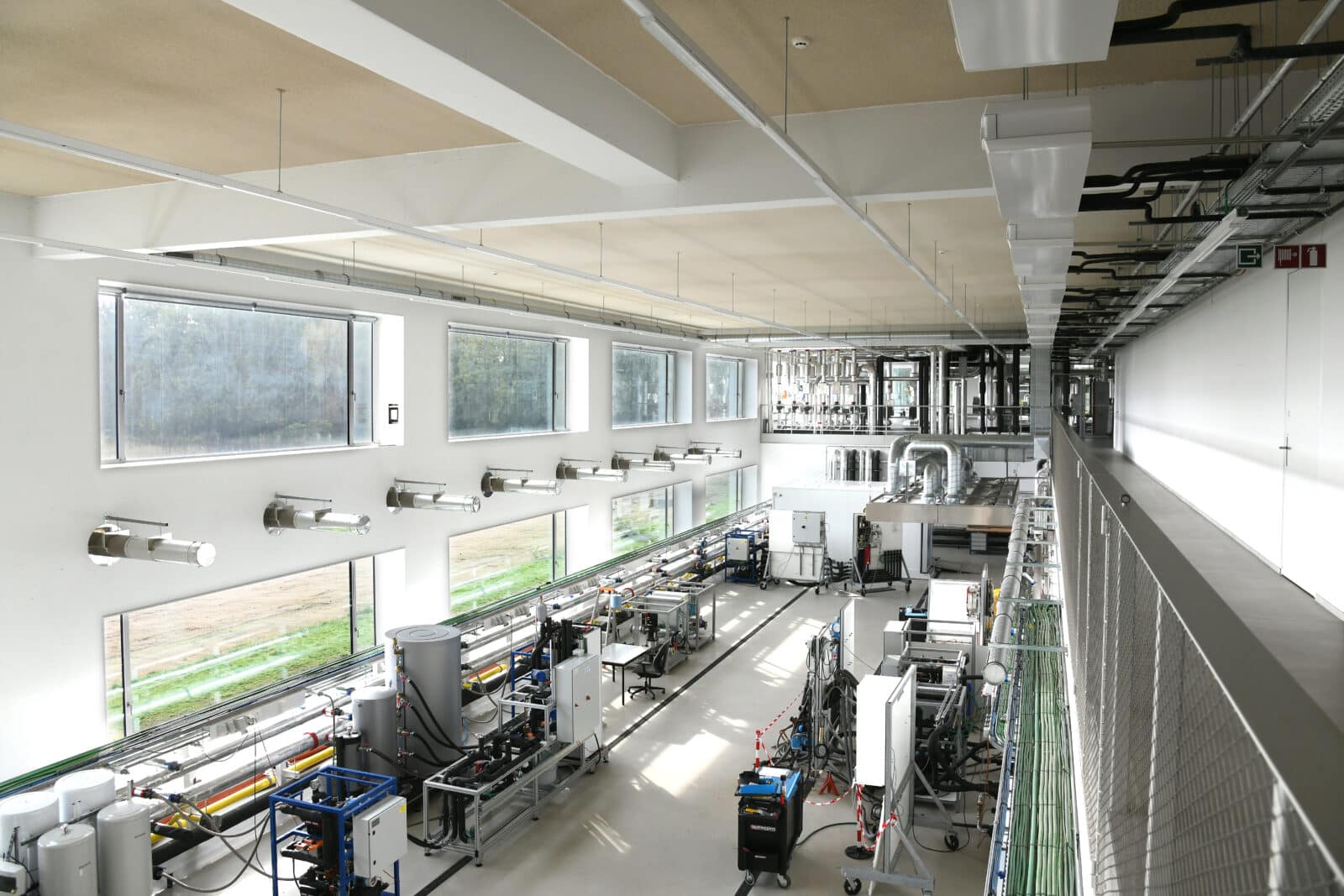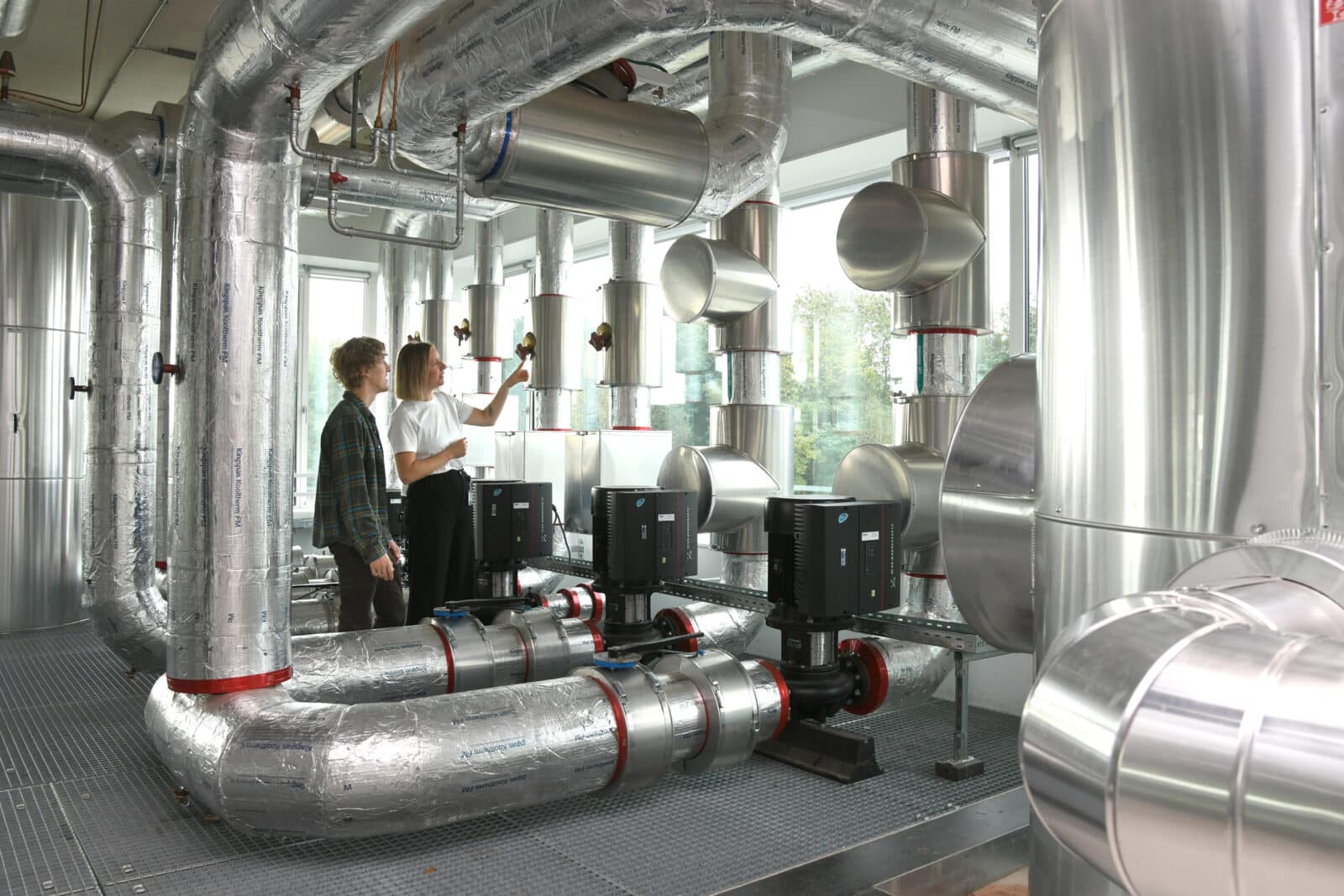Digitalisation in District Heating and Cooling Networks
In future energy systems the role of digitalization will play a major role and will make energy systems smarter, more efficient, reliable and able to make use of more renewable energy. DHC plants and networks will be fully optimized from production to the end consumers. Therefore, EnergyVille/VITO develops algorithms that can make DHC networks more efficient and the same time less expensive to operate. Also for design of DHC networks these algorithms can reduce the investment costs. Our technical labs are used to pre-test our proof of concepts before entering the market together with industrial companies. A short update on our research activities in the field of DHC networks is given here.

Smart DHC controller
EnergyVille works on technologies tackling the energy efficiency of district heating networks. We have developed a smart DHC controller based on self-learning algorithms that enables to maximize the use of waste heat and renewable energy sources in DHC networks. The controller optimizes the consumption of the buildings and districts and the demand of the network and optimally uses the potential of activating the building thermal mass as thermal energy storage system. The technology also controls the supply and consumption side (‘demand side management’) of district heating networks and the different components of the energy system. This controller is now implemented on 2 district heating networks in Mijnwater (Heerlen) and Rottne (Sweden) and is evaluated.
You can find the final results of the STORM controller performance here.
Fault detection and management
Substations in thermal grids make the connection between the grid and the buildings or installations connected to it. Traditionally, they are built with one or more heat exchangers, some piping and valves to regulate the flow and pressures, and a control framework combined with (limited) sensor equipment. Any flaw or fault in these substations results in an increased return temperature of the grid, which is extremely detrimental for low temperature operation and energy efficiency. These flaws and faults occur more than often in practice; studies have shown that up to 75% of all installed substations exhibit some kind of faulty behaviour. EnergyVille is currently working on algorithms to better detect, correct and diagnose faults in substations. Supported by the testing of substations in our Thermo Technical lab these algorithms aim at reducing the number of maintenance interventions in a DHC network.

Lowering return temperatures
Network temperatures play a major role in the overall efficiency of district heating networks. Low network temperatures are desirable, because they allow high heat production efficiency and low network heat losses. Furthermore, low network temperatures benefit the injection of low-temperature renewable and excess heat sources. At the same time, a high temperature difference between supply and return pipes is desired to limit the network flow rate. EnergyVille works on methods to lower the return temperature of district heating networks significantly in order to increase the efficiency of the energy systems, reduces pumping power and increases the network capacity. First simulation results show a significant reduction of the return temperature by up to 9.9 °C (average 6.0 °C) and primary flow rate reduction up to 14.7 % (average 7.6 %). These algorithms will be further tested in our thermo technical lab in the coming months.
